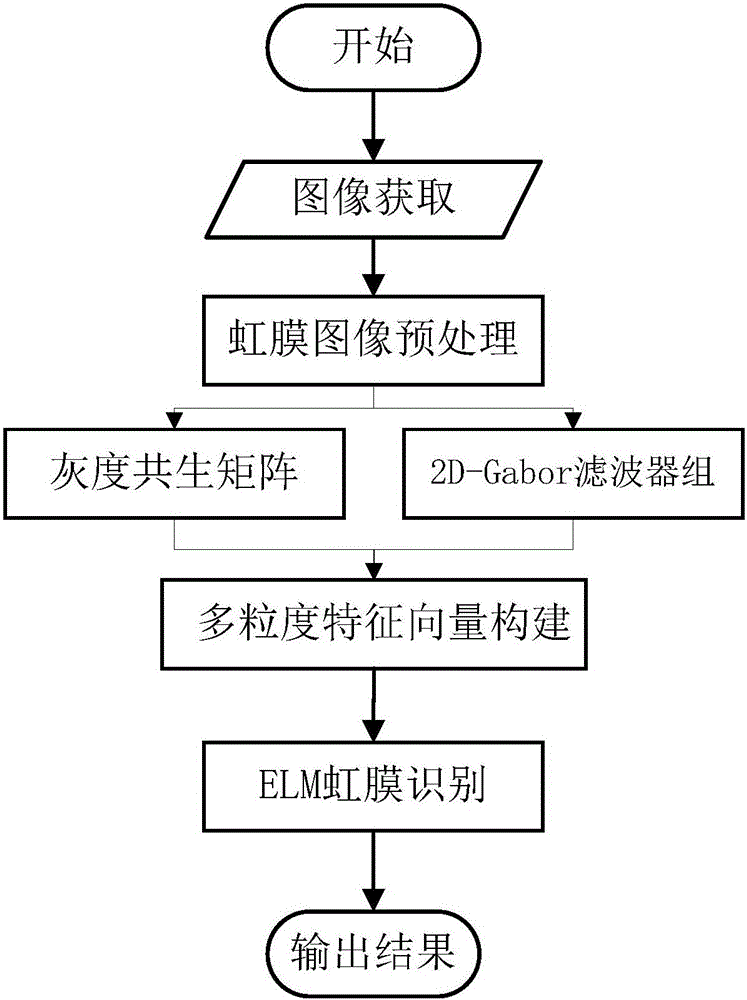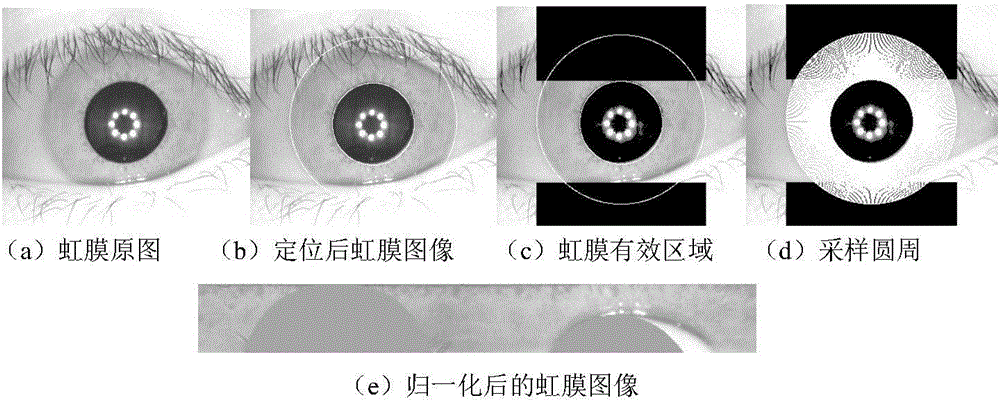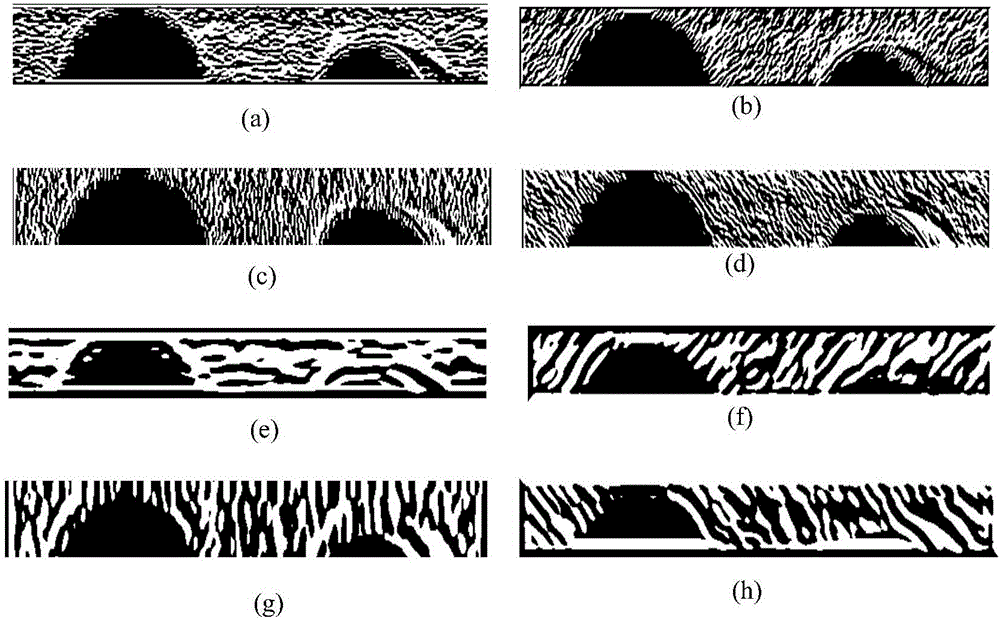ELM-based multi-granularity iris recognition method
An iris recognition and multi-granularity technology, which is applied in character and pattern recognition, instruments, computer parts, etc., can solve the problems of long neural network recognition time, increase the computational complexity and recognition time of recognition algorithms, and achieve high recognition accuracy, The effect of meeting the requirements of high recognition and real-time performance and avoiding one-sided defects
- Summary
- Abstract
- Description
- Claims
- Application Information
AI Technical Summary
Problems solved by technology
Method used
Image
Examples
Embodiment 1
[0035] In recent years, because the iris has good stability and strong non-invasiveness, it has more application fields than fingerprints and facial recognition, and has received more and more attention. Therefore, it is more and more widely used in many fields such as e-commerce, access control and time attendance. The development status of iris recognition technology is as follows:
[0036] In terms of iris feature extraction, the iris features extracted by Gabor filtering method, wavelet zero-crossing detection method, correlation analysis method and low-pass filtering method have better recognition characteristics, but using a single Gabor filter is easy to discard effective iris information. However, wavelet zero-crossing detection and correlation analysis methods only use iris edge texture information with little information.
[0037]In terms of iris recognition algorithms, the neural networks used in the iris recognition neighborhood mainly include: BP neural network a...
Embodiment 2
[0057] The multi-granularity iris recognition method based on ELM is the same as embodiment 1, wherein 4 texture features of the gray level co-occurrence matrix described in step (3) are at the pixel pair (i, j) distance d=1, and the scanning direction is respectively θ=0 °, θ=45°, θ=90°, θ=135°, the calculation formulas of the above four texture features are as follows:
[0058] (3.1): Angular second moment (UNI), also called energy, is the sum of squares of the gray level co-occurrence matrix, which reflects the uniformity of image gray level distribution and texture thickness;
[0059]
[0060] (3.2): Entropy (ENT), entropy is a measure of the amount of information an image has, a measure of randomness, which represents the degree of inhomogeneity or complexity of the texture in the image;
[0061]
[0062] (3.3): Contrast (CON), that is, the moment of inertia, it directly reflects the contrast between the brightness of a certain pixel value and its neighboring pixel ...
Embodiment 3
[0070]The multi-granularity iris recognition method based on ELM is the same as embodiment 1-2, wherein described in step (4.1) by 4 directions, the 2D-Gabor filter bank that 20 filters that 5 frequencies are formed construct, wherein 4 The first directions are: θ=0°, 45°, 90°, 135°, here is the filtering direction of the filter, which is different from the scanning direction concept in the gray level co-occurrence matrix, and the five frequencies are: f=0.25, f=0.167, f=0.125, f=0.0625, f=0.0417, these 5 frequencies are selected in the present invention because compared with other frequencies, these 5 frequencies have better filtering effects in the simulation of the present invention.
[0071] In actual operation, 20 different filters can be formed by selecting suitable four directions and five frequencies according to the actually collected iris image and the normalized iris image.
[0072] In order to prove that the filtering effects of different frequency and different di...
PUM
 Login to View More
Login to View More Abstract
Description
Claims
Application Information
 Login to View More
Login to View More - R&D
- Intellectual Property
- Life Sciences
- Materials
- Tech Scout
- Unparalleled Data Quality
- Higher Quality Content
- 60% Fewer Hallucinations
Browse by: Latest US Patents, China's latest patents, Technical Efficacy Thesaurus, Application Domain, Technology Topic, Popular Technical Reports.
© 2025 PatSnap. All rights reserved.Legal|Privacy policy|Modern Slavery Act Transparency Statement|Sitemap|About US| Contact US: help@patsnap.com



